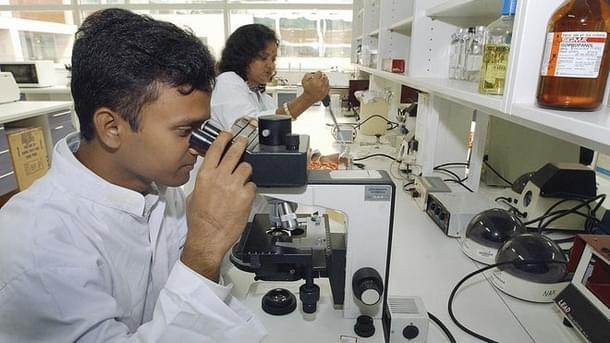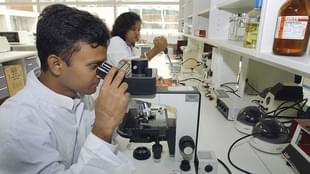Ideas
Dilemma Of The Draft Pharma Policy: To Protect The Consumer Or Promote Industry?
Ananya Awasthi
Sep 12, 2017, 12:13 PM | Updated 12:13 PM IST
Save & read from anywhere!
Bookmark stories for easy access on any device or the Swarajya app.


The Draft National Pharma Policy 2017 is a perfect example of the ‘catch 22’ situation. The policy tries to strike a balance between making life saving drugs affordable to the public while at the same time moving away from a price control regime to that which promotes innovation and expansion of an indigenous pharma industry. Let us see how the draft policy plans to navigate between the two often conflicting priorities.
The first and most important change made by the draft pharma policy is that it states that the Drug Price Control Order (DPCO) will be “reoriented to move from price-control to monitoring of drug prices, their availability and accessibility.” That being said, the process identified for actualising the above is somewhat bizarre. The policy plans to clip away the paragraph 19 of the DPCO from the National Pharmaceutical Pricing Authority (NPPA) which accords the regulator, “extraordinary powers” to review the price controls, free from interference from the government.
Here it is important to note that the Bombay High Court has already ruled in favour of para 19 stating that it is well within the scheme of the purpose of price control. Also, it was the same clause which allowed NPPA to recently cap the soaring prices of heart stents and knee caps. In addition to that, the policy plans to institute an “advisory body for pricing, nominated by the government in the NPPA. The body will consist of doctors, pharmacists, other experts, civil society representatives, industry representatives and government representatives. The advice of this body will be recommendatory and the NPPA may accept or modify the advice rendered. While modifying/rejecting its advice, the NPPA will assign reasons in writing for doing so.”
Now, this move can potentially lead to two scenarios. The more feared of the possibilities is that the institutional autonomy of the NPPA will be diluted leading to greater government interference in price controls, which in effect, may tilt the price-monitoring regime in favour of the pharma industry. The other and a potentially hidden objective of the government may be to increase their span of control over drug price regulation. What strengthens this assumption is the fact that quite contrary to the expectations, Indian Pharmaceutical Alliance (IPA) has opposed any policy change on this account. They have cited that implementation of the draft pharmaceutical policy will lead to delays in the working of the regulator while increasing the cost of production to the manufacturers, in light of the new quality standards.
This brings us to the second paradigm shift indicated by the draft pharma policy. The policy states that “the quality assurance of indigenously manufactured drugs is another area of concern. While the drugs that get exported have a stringent quality assurance system, put in place and insisted by the importing countries internal requirements; concerns have been raised on the quality surveillance of the indigenously manufactured drugs for domestic consumption”.
Having said this, the policy suggests two important solutions for effecting quality assurance. One is making bio-equivalence mandatory as part of quality testing at all levels and the second is recommending that government procurement is done only from manufacturing units that are compliant with World Health Organisation’s (WHO) good manufacturing practices (GMP) or the good laboratory practices (GLP). This is a welcome change considering the poor standards of quality control displayed by most of the indigenous manufacturers – at least with drugs meant for domestic consumption. Inadvertently, this move will also reduce profit margins for the pharma industry, as they are made to ramp up quality standards.
The third and a conflicting policy change suggested is to reduce the number of drugs which will fall under the regime of price control while at the same time proposing a one brand-one salt regime. Currently, the National List of Essential Medicines (NLEM) is prepared by the Ministry of Health and a special committee. NELM is then expanded by NPPA to include any other drugs requiring price regulation. This expanded list, known as Schedule 1 is finally used by NPPA to fix the prices of various drugs. But the draft policy suggests that it will be the department of Pharmaceuticals which will prepare the list of drugs for price regulation, and the NPPA will have to adhere to it. An intended consequence of this move may be, curbing the number of drugs which can be brought under the price control regime.
This co-relates with the recent memorandum issued by the ministry for NPPA on 4 April which says, “any drug not included in NLEM should not be part of DPCO Schedule 1.” On the other hand, the policy tries to counter the smart marketing strategies of pharma companies to manufacture the same drug at different prices and brand names by recommending a “one company–one drug–one brand name–one price.” And also makes it clear that “while growth of pharmaceutical industry and concerns related thereto are important, more important is the overall objective of making quality drugs accessible to the poor patients at affordable prices”.
The fourth major policy shift indicated by the draft is to incentivise indigenous manufacturing of drugs and reduce its dependence on imported substitutes. This rightfully addresses the present scenario where over 50 per cent of the drugs in the Indian market are manufactured from imported Active Pharmaceutical Ingredients (API) or Chinese substitutes. Although, the policy highlights the need for giving a push to “Make in India”, concrete solutions for incentivising local manufacturing are largely lacking.
The above policy changes have to be seen in light of the fact that according to the National Sample Survey Organisation, over 70 per cent of the out of pocket expenditure on healthcare in India is on purchase of drugs. Simply put, if an average Indian spends Rs 100 on the cost of healthcare, nearly Rs 70 is spent on buying medicine alone. Interestingly, making essential and life-saving drugs available at affordable prices has often featured as a priority item in Prime Minster Narendra Modi’s agenda.
While setting up of Jan Aushadhi stores, which provide for cheap generic drugs and instituting one brand-one salt regime, is a step in the same direction. The move to curtail NPPA’s autonomy and opening the doors for reducing the number of drugs, which can be brought under the price control regime seems to be singing a different tune. But what this policy might achieve is signalling a major policy shift from the price control regime to a more democratic monitoring of the drug prices. This may incentivise local drug manufacturers to invest in R&D and produce innovative and efficacious drugs for both domestic and international consumption. Quality standards have already been heightened, though profit margins for the pharma companies may take a hit while translating the same.
Conclusively, the policy seems to be caught in the middle of protecting consumer and industry interests. Only the implementation of the policy will make it clear; if the move to increase governmental control over the price regulator is towards making life saving drugs more affordable to the general public or whether the skeptics are right in assuming that with the diminished role for the NPPA, the drug policy will shift heavily in favour of the pharma industry.
Dr. Ananya Awasthi is a Masters in Global Health from Harvard University and writes on Public Health, Wellbeing and Indic Philosophies.





